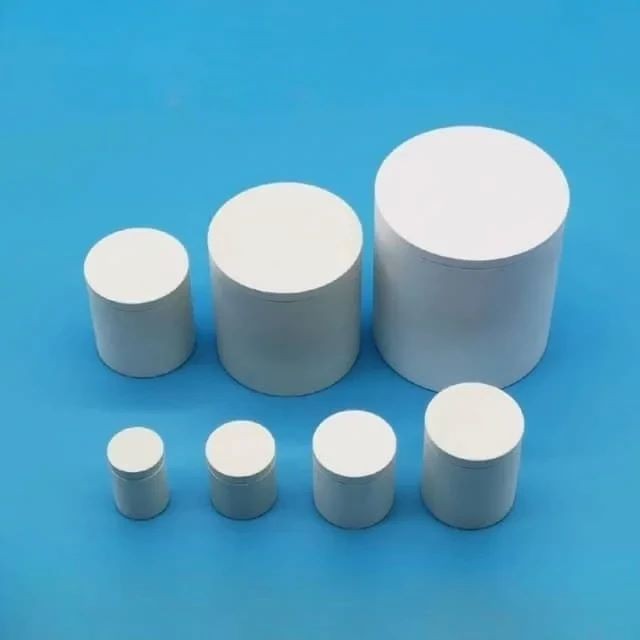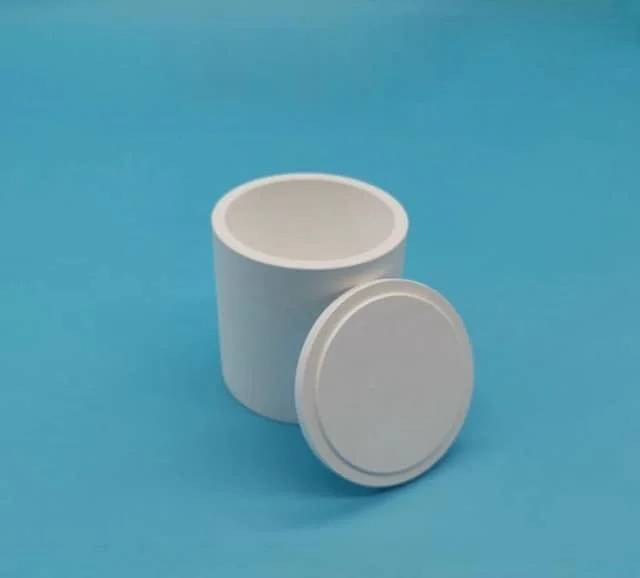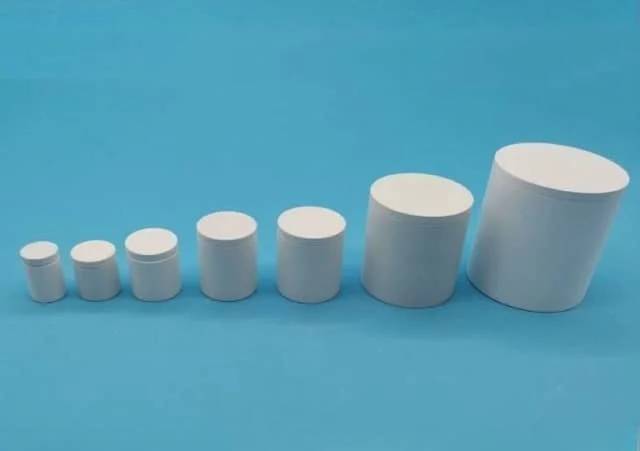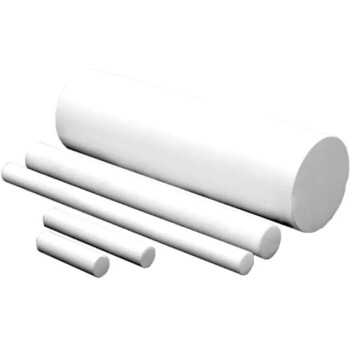
Thin Film Deposition Parts
Boron Nitride (BN) Crucible for Phosphorous Powder Sintered
Item Number : KM-D01
Price varies based on specs and customizations
- Material
- Boron nitride
- Specification
- 2 / 3 / 5 / 10 / 20 / 50 / 100ML
Shipping:
Contact us to get shipping details Enjoy On-time Dispatch Guarantee.
Why Choose Us
Reliable PartnerEasy ordering process, quality products, and dedicated support for your business success.
Application
phosphorous powder sintered boron nitride (BN) crucible are synthetic technical ceramic materials. It has excellent thermal properties: high thermal conductivity and excellent thermal shock resistance, smooth, dense surface, no pollution, and long service life. Used for phosphor powder sintering, ceramic silicate melting, metal smelting, and crystal growth.
Adding different shapes and quantities of BN materials in PiG (phosphor in glass) can effectively control the mechanical strength, heat dissipation and luminescence properties of the sheet. A fluorescent film with strong thermal stability and mechanical properties, PiG prepared by adding an appropriate amount of nanotubes and nanosheets has higher quantum efficiency and better heat dissipation performance after being excited by high-power LEDs.
Small boron nitride crucibles for phosphor sintering are also suitable for crystal growth in molten metal smelting of ceramic silicates.
Detail & Parts




Technical specifications
| Capacity and size (inner and outer diameter and height) |
|
The crucibles we show are available in different sizes and custom sizes are available on request.
Advantages
- Excellent heat cycle resistance; high thermal stability.
- Low thermal expansion; electrical insulation.
- High thermal conductivity even at high operating temperatures
- Good mold release properties; easy machining.
- Resists wetting by most molten metals.
4.9
out of
5
The Boron Nitride crucible is perfect for my high-temperature experiments. It can withstand extreme temperatures and is chemically inert, so I can use it with a variety of materials.
4.7
out of
5
This crucible is a game-changer for my research. It's durable, easy to clean, and provides excellent thermal insulation. Highly recommended!
4.8
out of
5
The quality of this crucible is top-notch. It's made from high-purity BN, which ensures consistent and reliable performance. I'm very satisfied with my purchase.
4.6
out of
5
I was impressed with the fast delivery of this crucible. It arrived well-packaged and in perfect condition. Thank you for the excellent service!
4.9
out of
5
The Boron Nitride crucible exceeded my expectations. It's incredibly durable and has held up well under extreme conditions. I highly recommend it for demanding applications.
4.7
out of
5
This crucible is a great value for the price. It's well-made and performs just as well as more expensive brands. I'm very happy with my purchase.
4.8
out of
5
I'm very impressed with the technological advancements of this crucible. It's designed to withstand extreme temperatures and provide excellent thermal insulation. It's a must-have for any laboratory.
4.6
out of
5
The Boron Nitride crucible is a great addition to my lab. It's easy to use and clean, and it provides excellent results. I highly recommend it to other researchers.
4.9
out of
5
This crucible is simply amazing! It can withstand temperatures up to 2000 degrees Celsius and is resistant to most corrosive chemicals. It's a must-have for any high-temperature application.
4.7
out of
5
I'm very happy with the performance of this crucible. It's durable, reliable, and provides excellent thermal insulation. I would definitely recommend it to others.
4.8
out of
5
The Boron Nitride crucible is a valuable asset to my lab. It's perfect for high-temperature experiments and provides excellent results. I highly recommend it to other scientists.
4.6
out of
5
This crucible is a great investment for any laboratory. It's durable, easy to use, and provides excellent results. I'm very happy with my purchase.
4.9
out of
5
The Boron Nitride crucible is a game-changer for my research. It's allowed me to achieve results that I couldn't have with other crucibles. I highly recommend it to other researchers.
REQUEST A QUOTE
Our professional team will reply to you within one business day. Please feel free to contact us!
Related Products

Electron Beam Evaporation Coating Conductive Boron Nitride Crucible BN Crucible
High-purity and smooth conductive boron nitride crucible for electron beam evaporation coating, with high temperature and thermal cycling performance.

Boron Nitride (BN) Ceramic Rod for High Temperature Applications
Boron nitride (BN) rod is the strongest boron nitride crystal form like graphite, which has excellent electrical insulation, chemical stability and dielectric properties.

Hexagonal Boron Nitride HBN Ceramic Ring
Boron nitride ceramic (BN) rings are commonly used in high temperature applications such as furnace fixtures, heat exchangers and semiconductor processing.

High Purity Pure Graphite Crucible for Evaporation
Vessels for high temperature applications, where materials are kept at extremely high temperatures to evaporate, allowing thin films to be deposited on substrates.

Hexagonal Boron Nitride HBN Thermocouple Protection Tube
Hexagonal boron nitride ceramics is an emerging industrial material. Because of its similar structure to graphite and many similarities in performance, it is also called "white graphite".

High Temperature Muffle Oven Furnace for Laboratory Debinding and Pre Sintering
KT-MD High temperature debinding and pre-sintering furnace for ceramic materials with various molding processes. Ideal for electronic components such as MLCC and NFC.

E Beam Crucibles Electron Gun Beam Crucible for Evaporation
In the context of electron gun beam evaporation, a crucible is a container or source holder used to contain and evaporate the material to be deposited onto a substrate.

High Purity Pure Graphite Crucible for Electron Beam Evaporation
A technology mainly used in the field of power electronics. It is a graphite film made of carbon source material by material deposition using electron beam technology.

Tungsten and molybdenum crucibles are commonly used in electron beam evaporation processes due to their excellent thermal and mechanical properties.

Electron Beam Evaporation Coating Gold Plating Tungsten Molybdenum Crucible for Evaporation
These crucibles act as containers for the gold material evaporated by the electron evaporation beam while precisely directing the electron beam for precise deposition.

Electron Beam Evaporation Coating Oxygen-Free Copper Crucible and Evaporation Boat
Electron Beam Evaporation Coating Oxygen-Free Copper Crucible enables precise co-deposition of various materials. Its controlled temperature and water-cooled design ensure pure and efficient thin film deposition.
Related Articles

Comparison of Pyrolytic Graphite and Pyrolytic Boron Nitride Crucibles
A detailed comparison of pyrolytic graphite and pyrolytic boron nitride crucibles, focusing on their preparation processes, characteristics, and applications.

Applications and Importance of Hydraulic Press in Laboratories
A hydraulic press is a machine that uses the pressure generated in a confined fluid to configure metals, plastics, rubber, and other materials. Its operation is governed by Pascal’s principle, which states that pressure applied to a confined fluid is transmitted unaltered throughout the fluid.

Comprehensive Guide to Spark Plasma Sintering Furnaces: Applications, Features, and Benefits
Explore the advanced features and applications of Spark Plasma Sintering Furnaces (SPS) in material science. Learn how SPS technology offers rapid, efficient, and versatile sintering for various materials.

Guidelines for the Use of Boron Nitride Crucibles
Instructions on the proper use, precautions, and compatibility of boron nitride crucibles.

Introduction to Various Ceramic Crucibles
An overview of different types of ceramic crucibles, their properties, and applications.

The Role and Types of Crucibles in Scientific Experiments
Explores the significance and various types of crucibles in scientific experiments, focusing on their materials and applications.

Inorganic Non-Metallic Materials: Crucibles
An overview of crucibles made from various inorganic non-metallic materials, their uses, technical parameters, and advantages.

Comprehensive Guide to Alumina Crucibles in Powder Metallurgy
An in-depth look at the properties, applications, and usage of alumina crucibles in powder metallurgy processes.

Fused Silica Crucible: Properties, Applications, and Preparation Process
An in-depth look at the properties, applications, and preparation methods of fused silica crucibles in the solar photovoltaic industry.

High Purity Graphite Crucible: Features, Production, and Usage
An in-depth look at high purity graphite crucibles, their production processes, and their industrial applications.

Alumina Crucibles in Precision Casting
Explores the use of alumina crucibles in precision casting, focusing on their properties and advantages in high-temperature alloy melting.

Crucible Types, Properties, and Applications
A detailed overview of various crucible types, their properties, and application areas in laboratory and industrial settings.